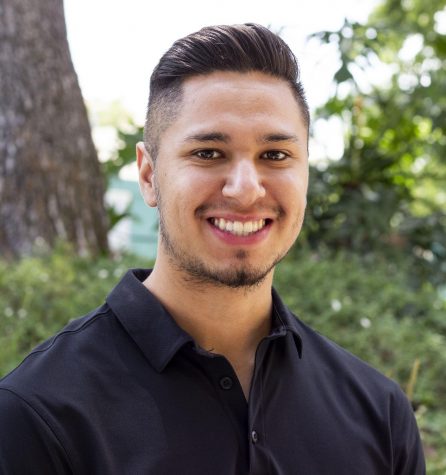The tutoring program known as Supplemental Instruction has proven to be successful in helping students with difficult general education classes.
The program, referred to as SI, was initially launched at San Diego State in 2015 to help students who were struggling with professor Mark Laumakis’s lower division psychology 101 course. Now, the program has expanded to include other STEM courses and its peer leaders are looking to encourage incoming freshman to attend sessions early on to ensure their success in these classes.
“It’s a really big challenge for students coming here, especially if you’re a first-generation college student,” Laumakis said about his class during an informational video promoting SI.
While the program seems like any other tutoring program, there are several key differences and methods it follows that sets it apart.
For one, its “tutors” are known as SI leaders that peer-facilitate sessions rather than teach them.
There also follow three “pillars” that serve as guides during these sessions to better help students understand the material they’re struggling with.
“It’s almost like the ultimate group study session,” SI program coordinator Emily Bates said.
Bates said one of the pillars that SI leaders focus on is redirecting questions. This would mean not giving students the answers right away when they ask a question.
Instead, SI leaders use games and other group activities to help students learn the material.
“Normally, in tutoring you ask a question and immediately get an answer without really having to think too much,” Bates said.
She explained that, by not giving up answers right away, students are prompted to utilize their own resources, such as in-class notes, text books and each other, to come up with the answer.
“We really want to break that, what we call cycle of dependency (in tutoring),” Bates said.
Additionally, Bates said that the SI leaders give students time to understand the material before testing their knowledge.
Alumni Harrison Kozlowski, one of the original SI leaders in 2015, said it was initially hard adjusting to the SI model of not giving students answers right away, but that she eventually learned the value in this practice.
“Ultimately that’s a lot more effective for learning than just saying ‘here’s the answer’,” Kozlowski said.
He added that students need to attend a couple of sessions before adjusting to the different methods of studying themselves.
Psychology senior and SI leader Kelly Finney admitted that she did not like SI methods at first.
“I hated it at first,” Finney said. “I thought that SI was not good.”
However, she decided to continue going after seeing the statistics of students who received better grades in Professor Laumakis’s class after attending SI than those who didn’t. Soon after, Finney began attending sessions regularly.
“I would go about once a week (to SI),” Finney said. “So that was about an hour and a half of study time per week that I wouldn’t have done on my own. And, because of that, I got better grades.”
Now, Finney is encouraging incoming students to attend the SI program and giving it a try.
“It’s not going to take much of your time and it might seem a little weird at first, but it 100 percent does help,” Finney said. “Bring a friend and try it out.”









